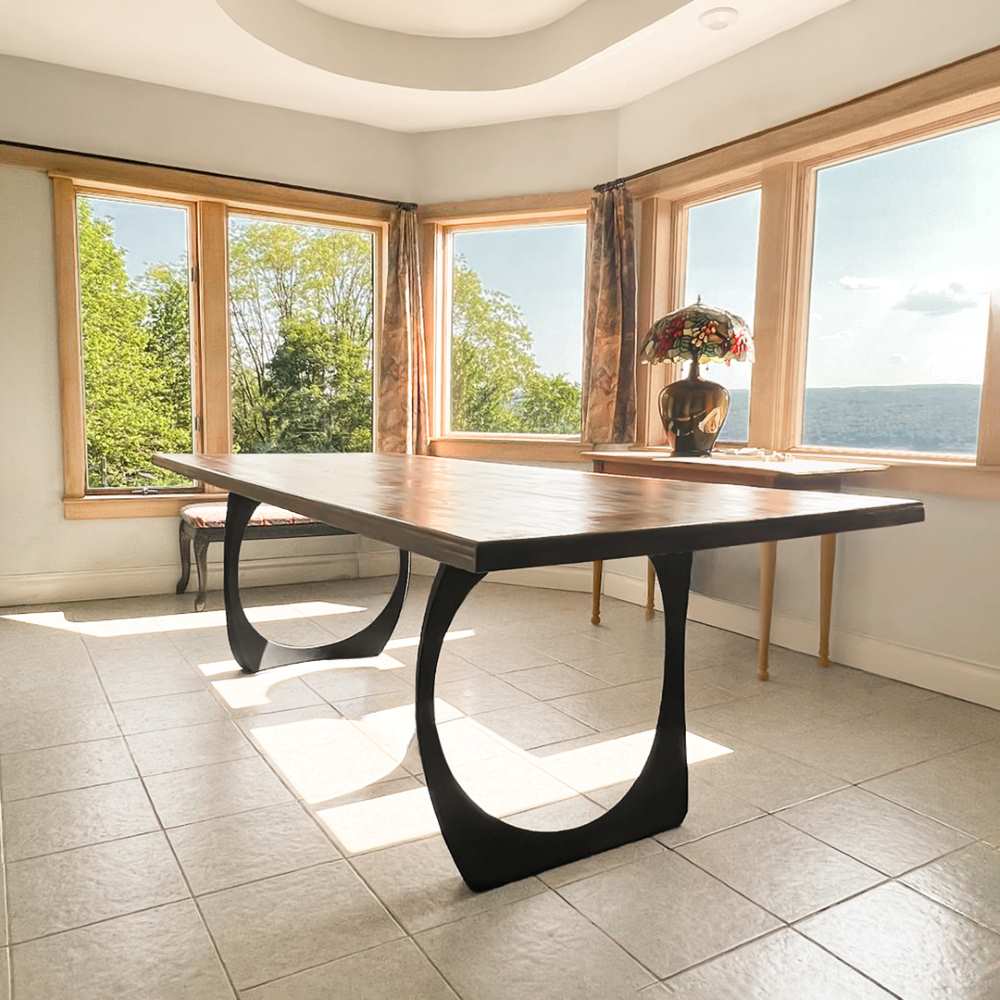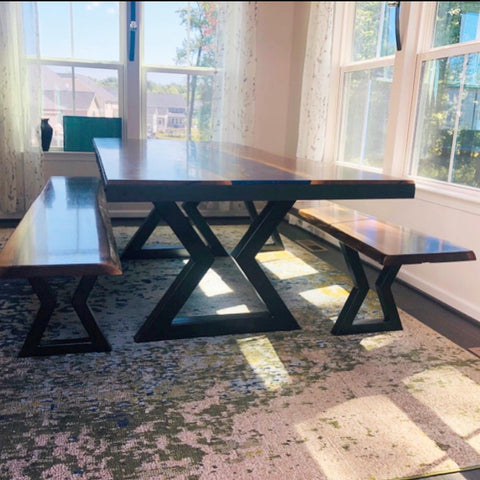How to Maintain and Care for Your Dining Room Table Legs
Wiki Article
Expert Tips for Setting Up Dining-room Table Legs for Maximum Security
When it pertains to mounting dining-room table legs, attaining maximum security is critical for both functionality and aesthetics. The procedure starts with selecting the ideal products and hardware, complied with by precise positioning and consideration of weight distribution. Each step plays an important duty in guaranteeing that the completed product holds up against everyday usage without jeopardizing safety or style honesty. Comprehending the subtleties of these elements can substantially affect the total result. What certain strategies can boost security also additionally?Choose the Right Legs
When selecting the appropriate legs for your dining-room table, it is important to consider both functionality and appearances. The legs you pick will significantly influence the general style and security of the table. Initially, assess the table's planned use; if you anticipate regular celebrations, stronger legs, such as those made from solid wood or metal, may be preferable, as they provide boosted resilience and support.Conventional eating tables usually range from 28 to 30 inches in height, so make certain the legs align with this standard for convenience. Tapered legs can include a contemporary touch, while turned legs could convey a much more classic visual.

Select Appropriate Equipment
Just how can the ideal hardware boost the security and durability of your eating room table? The selection of appropriate equipment is critical to guaranteeing that the legs of your table are securely attached and able to withstand normal use. Top notch screws, bolts, and brackets provide the essential stamina to sustain the weight of the table, as well as any extra loads put upon it throughout meals or events.When choosing screws, choose those made from sturdy materials such as stainless-steel or brass, which stand up to corrosion and preserve integrity in time. The size of the screws is equally important; they should permeate deeply into the table's framework without compromising honesty. For bolted connections, consider utilizing lock washers to stop loosening up due to vibration or movement.
Furthermore, utilizing corner braces can include additional assistance, especially for bigger tables or those with larger tops. These brackets distribute weight evenly and aid preserve the table's form. Making sure that the hardware you select is ideal for the certain materials of your table will further boost its total stability and longevity, permitting you to appreciate your dining experience for several years to come.
Ensure Proper Positioning
Proper placement of eating area table legs is vital for both visual charm and useful security. To attain optimum alignment, start by measuring the range from the table's edges to the leg accessory points.Utilize a degree throughout setup to validate that each leg is vertical to the tabletop. It is a good idea to note the wanted leg positions on the bottom of the table with a pencil or covering up tape prior to protecting them.
In addition, double-check the positioning after the preliminary screws are look what i found tightened up, as modifications may be needed before fully safeguarding the hardware. By prioritizing appropriate placement, you not just boost the table's overall design yet likewise guarantee that it continues to be secure and functional for years to find.

Consider Weight Circulation
After guaranteeing proper placement of the dining-room table legs, it is essential to think about weight distribution to improve stability and capability. dining room table legs. Proper weight circulation is essential in protecting against tottering and guaranteeing that the table can support its desired lots without risk of tipping or collapsingWhen placing the legs, ensure they are positioned at equal distances from the facility of the table to evenly distribute the weight across the structure. Take into consideration the weight of the tabletop and any type of items that will regularly hinge on it, such as tabletop devices or decorative pieces. Tables with larger surface areas need to preferably have legs positioned closer to the corners, as this takes full advantage of the base of support and minimizes the threat of instability.
Additionally, if the table is intended for usage in a high-traffic area, consider using larger materials for the legs or adding maintaining elements, such as cross-bracing or a reduced rack - dining room table legs. These changes can assist maintain balance and avoid shifting throughout use. Inevitably, a well-considered weight distribution method will substantially enhance the table's overall performance, guaranteeing it remains a appealing and useful centerpiece for your eating space
Examination Security Prior To Usage
Examining the stability of the dining-room table prior to usage is an important action that should not be forgotten. Ensuring that the table is stable and safe and secure can avoid crashes and lengthen the lifespan of the furniture. Begin by using mild pressure to different points on the table surface. Push down on the facility and after that along the edges, shifting or observing any type of wobbling. If the table reveals instability, determine the legs or joints that might call for modification.Next, i was reading this examine that all screws and fasteners are tightened up effectively. Loosened connections can result in instability and possible damages gradually. If necessary, use wood adhesive on joints to improve security, making sure to allow adequate drying time.

Final Thought
In final thought, the installation of dining area table legs requires mindful consideration of materials, equipment, weight, and positioning circulation to achieve optimum stability. By picking top quality fasteners and sturdy legs, making certain accurate positioning, and dispersing weight equally, the structural honesty of the table can be significantly enhanced. Carrying out a stability test prior to routine usage even more makes sure Continue that the table will certainly hold up against day-to-day stress, thus offering a dependable and safe dining experience.When it comes to mounting eating room table legs, accomplishing maximum security is vital for both capability and aesthetics. The legs you select will substantially impact the general design and stability of the table (dining room table legs). Conventional dining tables usually vary from 28 to 30 inches in elevation, so make certain the legs straighten with this criterion for convenience.Proper placement of dining room table legs is necessary for both visual appeal and practical security.In verdict, the setup of eating room table legs calls for mindful factor to consider of materials, positioning, hardware, and weight circulation to accomplish maximum stability
Report this wiki page